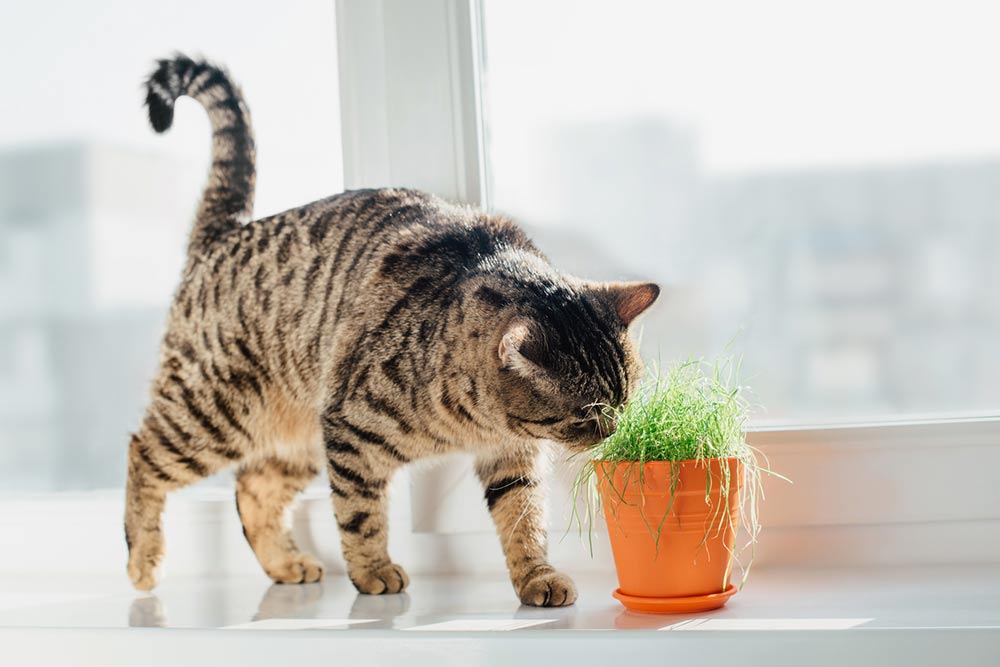
17 Plants That are Poisonous for Cats
Plant eating is a common behavior in cats. However, certain plants are toxic to them. If ingested, some plant parts can even cause a threat to the life of cats. Therefore, for the health and safety of the pet, it is best to be familiar with such toxic plants and avoid planting such herbs in the living space. This article lists 17 plants that are toxic to cats. Read on to learn more.
Sago Palm
Mostly found in tropical regions, certain variants of this plant are kept as houseplants. Every part of the plant is toxic for cats, with the seeds having the most toxins. It contains cycasin, which causes gastrointestinal and severe liver damage to cats.
Tulips
Although all parts of the plant, from petals to stems and leaves, contain dangerous compounds, the bulb of the tulip has the highest concentration of toxins. It can cause vomiting, diarrhea, tremors, and depression if ingested by cats.
Daffodils
Consuming daffodil petals and bulbs can cause gastrointestinal issues in cats. It can also lead to convulsions, tremors, and irregular heart rhythms in severe cases.
Aloe Vera
Although it is known for its healing powers, aloe vera can be toxic to cats. The inside gel is safe for cats, but the outer white waxy coating is harmful.
Autumn Crocus
This member of the lily family is toxic to cats because of its alkaloid colchicine content. All parts of this autumn plant can cause serious trouble to pets.
Dieffenbachia
A common house plant, Dieffenbachia, contains insoluble calcium oxalate crystals that can cause a burning sensation in the mouth when ingested.
Snake plant
The Snake plant is toxic for cats as it contains saponins, which, when consumed, can cause nausea, vomiting, and diarrhea.
Tomato plant
Leaves and stems of the tomato plant contain solanine, which is potentially toxic for cats. If cats eat the green parts of the plant or even unripe tomatoes, they might develop uncomfortable symptoms.
Azalea
Azaleas contain grayanotoxin, which is toxic to cats. If any part of the plant is ingested by cats, it can cause potential cardiac failure.
Cyclamen
Any part of the Cyclamen plant ingested by cats can result in symptoms such as vomiting, diarrhea, and irregular heart rhythms in cats.
Jade plant
Jade plants, also referred to as money plants, are highly toxic to cats. The cause of toxicity is not yet known, but every part of the plant can cause a reaction in cats.
Eucalyptus
Eucalyptus contains the component eucalyptol, which is considered poisonous to cats and can produce severe reactions when ingested.
Devil’s Ivy
This low-maintenance house plant contains insoluble calcium oxalate crystals. This, when consumed, can irritate the cat’s mouth and tongue.
Nerium Oleander
Oleandrin, a toxic component found in oleanders, is extremely toxic to cats and can adversely affect their heart.
Philodendrons
Philodendrons are toxic to cats as their leaves contain calcium oxalate crystals. When ingested, it can irritate the gastrointestinal tract.
Wisteria
The seeds and pods of wisteria can be extremely harmful to cats, potentially causing severe dehydration and central nervous system damage if ingested.
Marigolds
Marigolds are mildly toxic to cats and can result in symptoms such as irritation of the mouth, drooling, and diarrhea upon consumption.
To ensure the good health of feline companions, it is of utmost importance to keep toxic plants out of reach. Instead, replace them with pet-friendly plants and flowers without worry.


